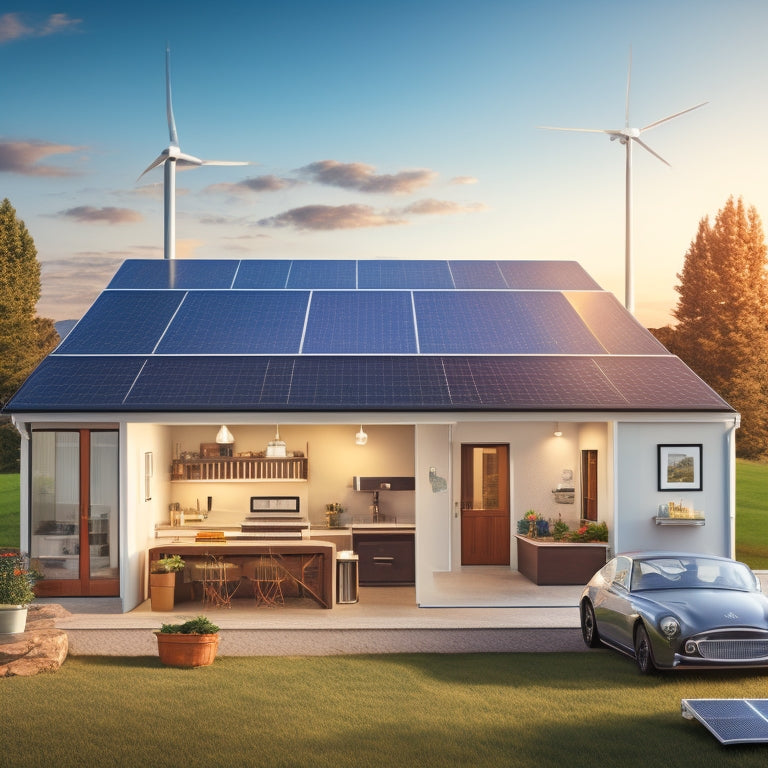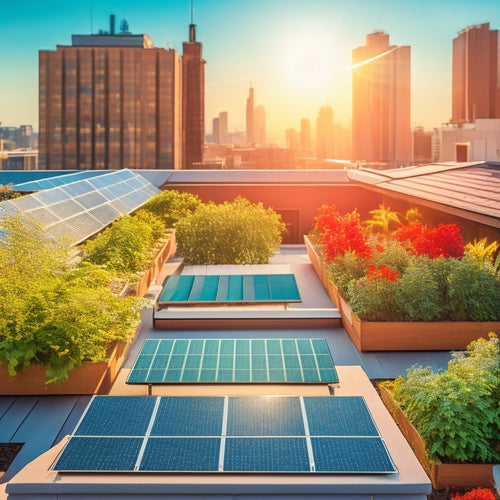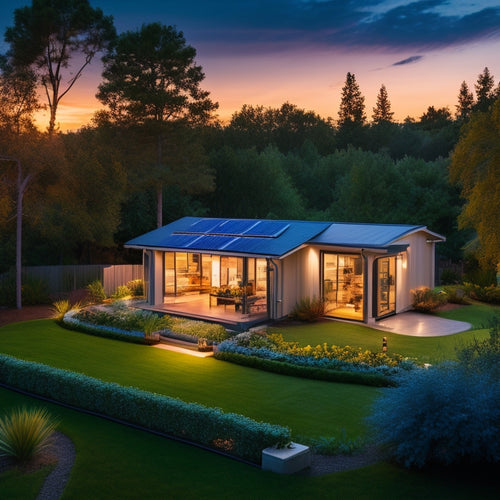
What Size Solar Panel System Do I Need?
Share
To determine the ideal size of your solar panel system, you need to balance your daily energy needs with your roof's solar potential. Calculate your total daily energy consumption in watt-hours, assess your roof's size, orientation, and shading, and identify areas of inefficiency. Consider your energy usage patterns, budget constraints, and available roof space to determine the right system size. By doing so, you'll maximize energy production while minimizing waste and overspending. As you weigh these factors, you'll uncover a system size that meets your needs, and discover more about optimizing your energy production.
Key Takeaways
• Calculate your total daily energy consumption in watt-hours (Wh) to determine the required system size.
• Assess your roof's solar potential, considering size, orientation, and shading, to determine the feasible system size.
• Balance your energy needs with budget constraints to ensure the system design meets your needs without overspending.
• Consider your energy usage patterns to determine the ideal system size, maximizing energy production while minimizing waste.
• Ensure the system size is optimized for your energy needs, taking into account available roof space and system efficiency.
Understanding Your Energy Needs
To determine the size of your solar panel system, you first need to understand your energy needs, which involves calculating your total daily energy consumption in watt-hours (Wh). This requires conducting an energy audit to identify areas of inefficiency and opportunities for improvement.
Start by making a list of all your appliances, including their wattage and usage hours per day. You'll be surprised at how quickly they add up. For instance, a 40-inch TV consuming 100W for 4 hours a day translates to 400Wh of daily energy consumption. Don't forget to include lighting, refrigeration, and HVAC systems in your calculation.
Improving appliance efficiency can greatly reduce your energy needs. Consider replacing traditional incandescent bulbs with LEDs, which use much less energy. Additionally, look for appliances with high Energy Star ratings, indicating their energy efficiency.
Assessing Your Roof's Solar Potential
Your roof's solar potential is an important factor in determining the best size and placement of your solar panel system. Evaluating it involves analyzing several key factors, including roof size, orientation, and shading.
When evaluating your roof's solar potential, you'll want to take into account the roof's orientation. A south-facing roof receives the most sunlight throughout the day. East- and west-facing roofs receive indirect sunlight, while north-facing roofs receive little to no direct sunlight. A Roof Orientation analysis will help you determine the best placement of your solar panels.
Shading Analysis is another critical factor in evaluating your roof's solar potential. Shading from trees, buildings, or other obstructions can greatly reduce the energy output of your solar panel system. You'll need to identify areas of your roof that receive partial or full shade during peak sunlight hours.
Choosing the Right System Size
Now that you've evaluated your roof's solar potential, you're ready to determine the ideal size of your solar panel system, which depends on several factors, including your energy needs, budget, and available roof space.
When choosing the right system size, it's crucial to take into account the following key factors:
-
Energy efficiency: A well-designed system should maximize energy production while minimizing energy waste.
-
System design: A properly sized system guarantees that your energy needs are met without overspending on unnecessary equipment.
-
Roof space constraints: Take into consideration the available space on your roof to determine the best system size.
-
Budget constraints: Balance your energy needs with your budget to avoid overspending.
-
Energy usage patterns: Understand your energy usage patterns to determine the ideal system size that meets your needs.
Calculating Your Energy Savings
Calculating your energy savings involves assessing how much you can expect to save on your utility bills each month once your solar panel system is installed. To do this, you'll need to evaluate your current energy usage and the energy efficiency of your solar panel system.
Getting the Most From Your System
In order to maximize the benefits of your solar panel system, optimizing its performance by selecting an appropriate system size and ensuring effective installation is essential. This will ensure you're getting the most out of your investment and enjoying the highest possible energy savings.
To achieve peak performance, consider the following key factors:
-
Energy Efficiency: Make sure your system is designed and installed to maximize energy production, taking into account factors like shading, panel orientation, and inverter selection.
-
System Maintenance: Regularly inspect and maintain your system to prevent energy losses due to dirty panels, loose connections, or faulty inverters.
-
Monitoring and Tracking: Keep tabs on your system's performance using monitoring software or apps to identify potential issues and optimize energy production.
-
Load Management: Optimize your energy usage by shifting non-essential loads to off-peak hours, reducing strain on the grid and maximizing your energy savings.
-
Upgrades and Expansion: Plan for future upgrades or expansions to your system, ensuring it remains efficient and adaptable to your evolving energy needs.
Frequently Asked Questions
Can I Add More Panels to My System in the Future?
Did you know that 70% of solar panel systems are upgraded within 5 years? You can easily add more panels to your system in the future, thanks to the flexibility of modern solar panel systems designed for future expansion and system upgrades.
How Long Does It Take to Install a Solar Panel System?
As you prepare for your solar panel installation, you'll want to know that the installation timeline typically takes 1-3 days, depending on the crew logistics, with a team of 2-5 professionals working efficiently to get your system up and running.
Do I Need to Clean My Solar Panels Regularly?
You're wondering if cleaning your solar panels regularly is a necessity. Think of it like washing your car's windshield – a clean slate guarantees peak performance. Regular panel maintenance enhances energy efficiency by up to 15%, so yes, cleaning is essential for maximum energy harvest.
Will My Solar Panels Still Work During a Power Outage?
During a power outage, you'll need a battery-backed solar panel system with an emergency backup feature to guarantee grid independence, allowing you to access stored energy when the grid goes down.
Are There Any Local Incentives for Going Solar?
You'll want to explore local incentives, such as State Rebates and Utility Discounts, which can greatly reduce your upfront costs; research and claim these benefits to maximize your solar investment's return.
Related Posts
-

Solar System Installation Rebates and Tax Credits
Solar system installations offer beneficial rebates and tax credits that greatly cut your initial costs. You can bene...
-

Solar Power Backup Solutions During Outages
Solar power backup solutions guarantee you have reliable energy during outages, providing essential power when the gr...
-

Solar Inverter Troubleshooting for Beginners
Troubleshooting your solar inverter starts with understanding its efficiency and performance metrics. Check for prope...


